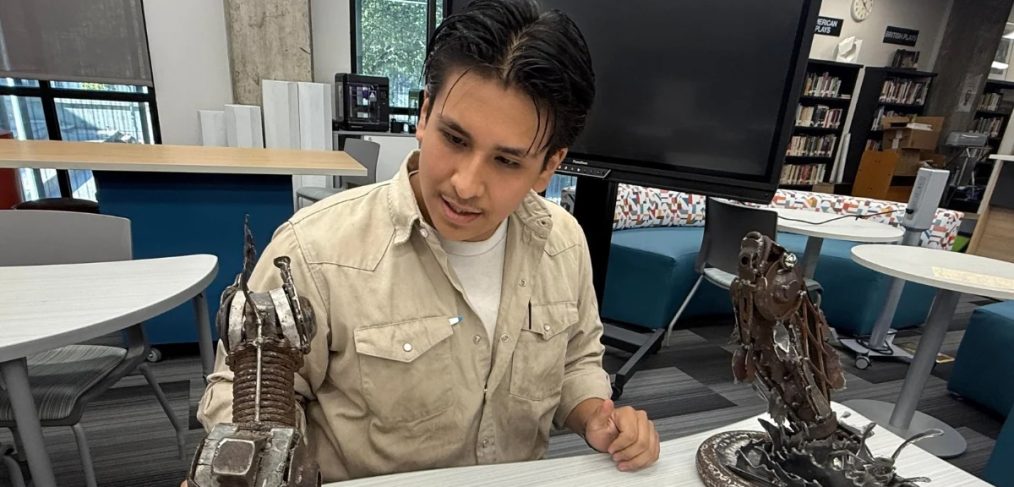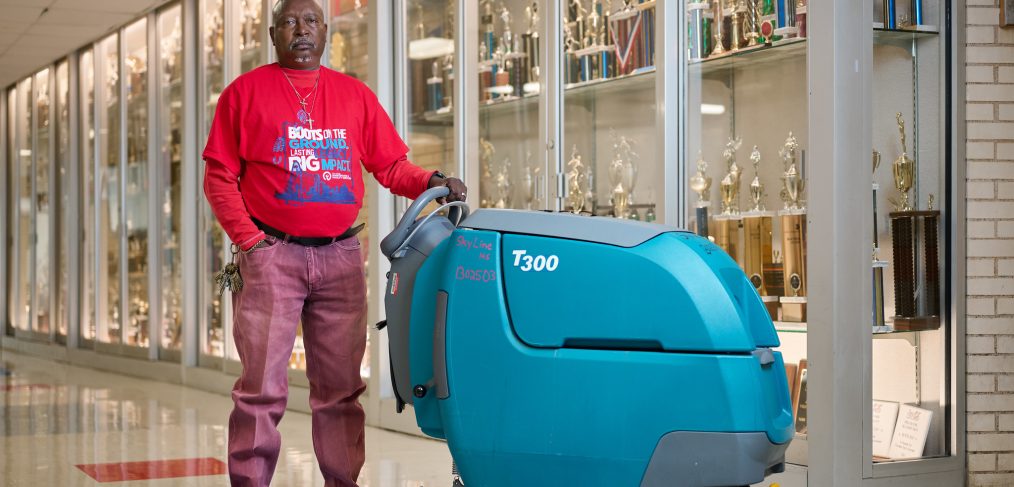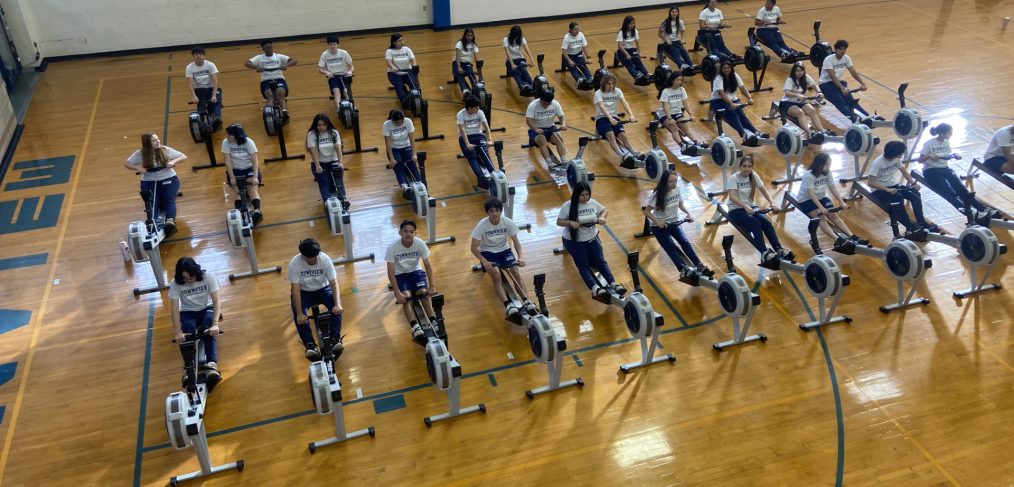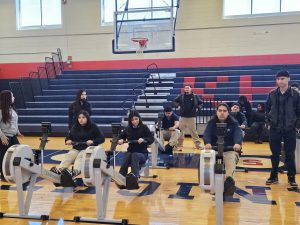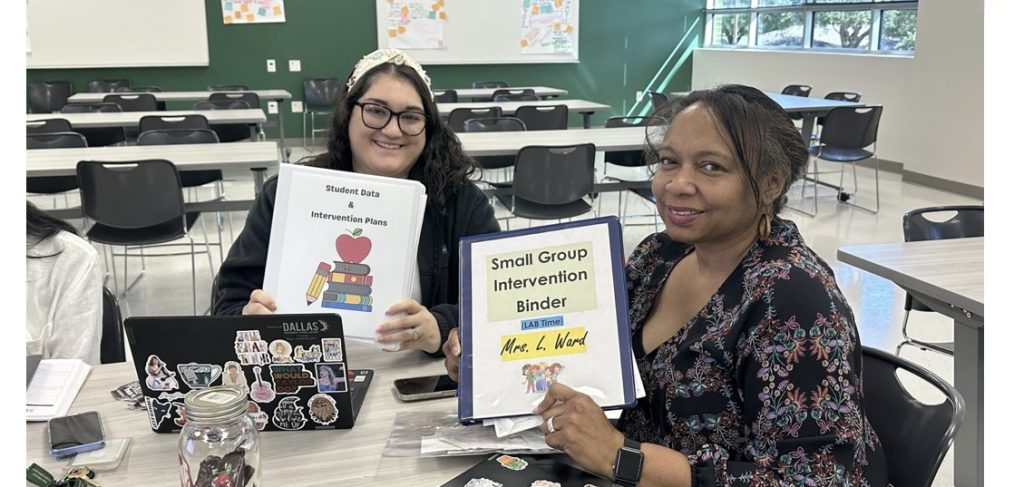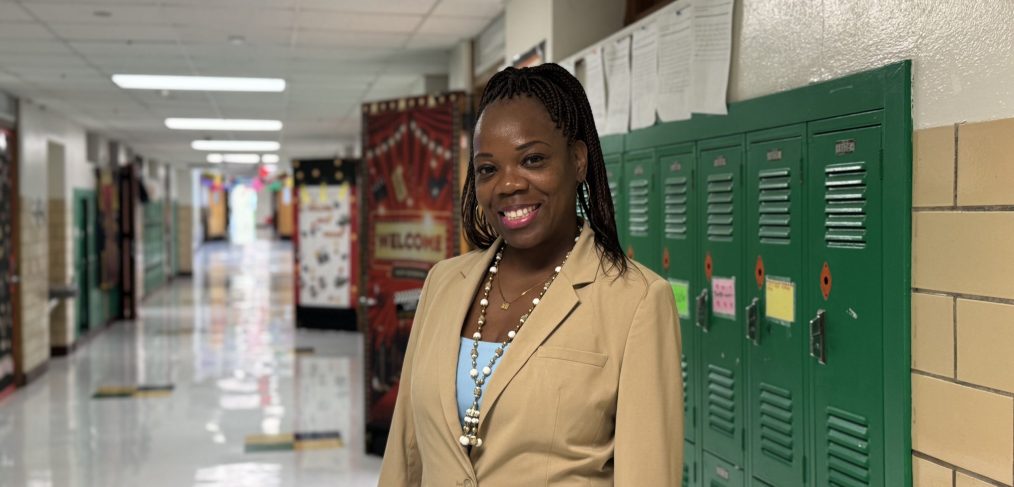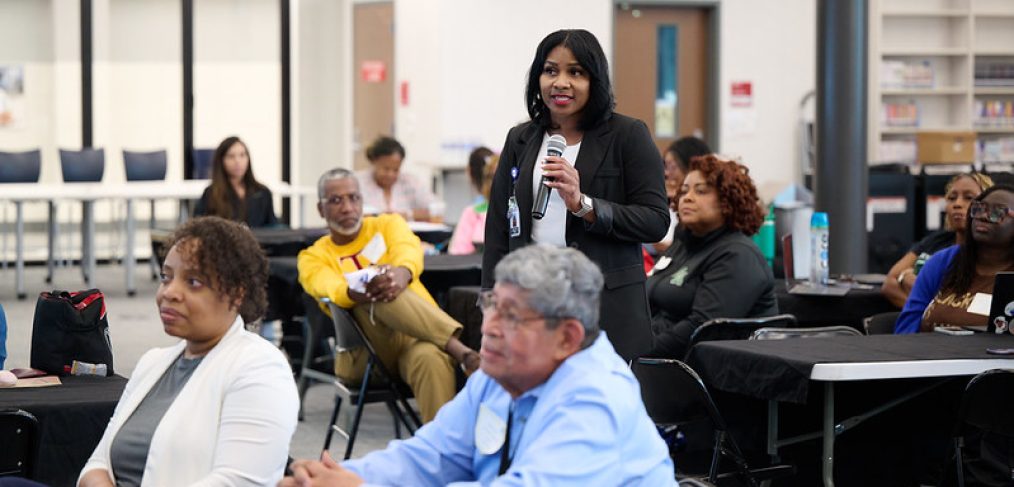For two weeks in September, students at Seagoville High School participated in a different kind of physical education: they rowed. During class, they slid back and forth on rowing machines, their hands gripping contoured handles, their feet strapped into foot pedals. Some of them were students who had, until then, refused to participate in physical education activities.
Twenty rowers—which had been installed in rows of two down the middle of the basketball court—managed to attract even students who, at the beginning of the school year, had refused to participate in PE classes, said Head Basketball Coach Victor Cortez.
“The kids are gravitating toward what’s going on in the gym, which is completely different for most of them since they’ve never been on a boat or on the water unless they’re swimming,” he said.
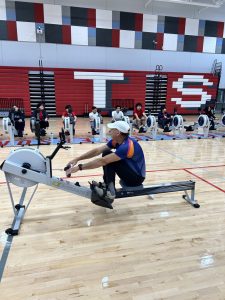
Students rowing at Thomas Jefferson High School
In partnership with Bachman ROC Rowing Club, Dallas ISD started the rowing pilot program at Thomas Jefferson High School in 2024. Flo Elkins and Patrick Hamner, co-founders of the club, transported twenty rowing machines to participating high schools and trained the school’s PE coaches on ERG ED®, a classroom-based indoor rowing program.
“Coach Brandi Elder was the first person to launch it, and Thomas Jefferson paved the way for everyone else to participate,” said Lisa Whitaker, director of Electives and Enrichment. “And from there, we surveyed the students, and they thought it was great.”
Encouraged by the positive responses, Whitaker integrated the ERG ED® unit into the PE curriculum of 13 other high schools, including Wilmer Hutchins and H. Grady Spruce high schools and Kathlyn Joy Gilliam Collegiate Academy.
“This year, we’re going to be at each school for two weeks. The goal is for each student to have at least five days on the rowing machines,” said Elkins. “From there, if students really want to pursue it further, there’s an opportunity for them to row in our Bachman ROC Rowing Club. This club, which is on Bachman Lake, allows them to participate in an on-the-water program.”
Flo Elkins also said that rowing has been often viewed as an elite sport. By bringing it to communities where rowing is not as popular a sport, she and Hamner hope to give students access to the advantages the sport offers, including potential college scholarships.
“There are lots and lots of rowing scholarships, especially for girls to go to college,” she said. “It’s definitely a pathway to college.”
But beyond scholarships and the opportunity to compete professionally, rowing is a low-impact, full-body workout that develops character and discipline.
“I love that you can row at any age. It’s a non-impact sport, which means it’s not hard on the joints,” Elkins said. “And just like any other sport, rowing teaches character and resilience. It also teaches discipline, time management skills, and how to push your body past where your mind might think you can go.”
Whitaker said that after students learn the mechanics of rowing, they go on a field trip to either Bachman Lake or White Rock Lake where they can experience actual rowing on the water.
“The main thing is for students to get exposure to recreational activities outdoors,” Whitaker said. “We want them to apply what they’ve learned in a real-world setting.”
In the spring, students will receive swimming lessons to bring the program full circle. This essential step, according to Whitaker, addresses a critical need identified by the district.
“We found a gap in students not knowing how to swim. Even though they know how to row on land, they would not be able to row on water,” she said. “That’s why we’ve partnered with the YMCA to give students the option to earn either a rowing certification or a lifeguard certification with the City of Dallas.”

Students rowing at Justin F. Kimball High School
On the last day of the rowing program at Seagoville, Coach Genesis Cole remarked that students truly enjoyed rowing and that some have expressed interest in pursuing it further.
“I have some students who have really thrived in it, and I have several young ladies who indicated that they want to find a way to get more experience,” he said. “I do believe that kids need to have a way of finding a positive outlet to do something for themselves, for their future, so this actually is a big deal.”
Cortez admitted that he would love to continue the rowing program yearly, because “it’s something the kids aren’t used to—it’s something fresh. It’s something new,” he said.
Ultimately, for Whitaker, the program is a testament to the district’s mission to bring experiences to campuses, cultivate community partnerships, and invest in the success and growth of all students.
“I just think that the program is representative of all that Dallas ISD is—we look for unique opportunities for kids to create pathways for them to continue their learning beyond the classroom,” she said. “We’re not trying to prepare students just for school; we’re trying to prepare them for life. This means we sometimes have to bring those experiences to the campus, and then from there, bring the students to the location.”
The Bachman ROC Rowing Club will continue to provide rowing machines and curriculum instruction to participating high schools throughout the 2025-2026 academic year. This commitment is part of a five-year contract the club has with the district.


